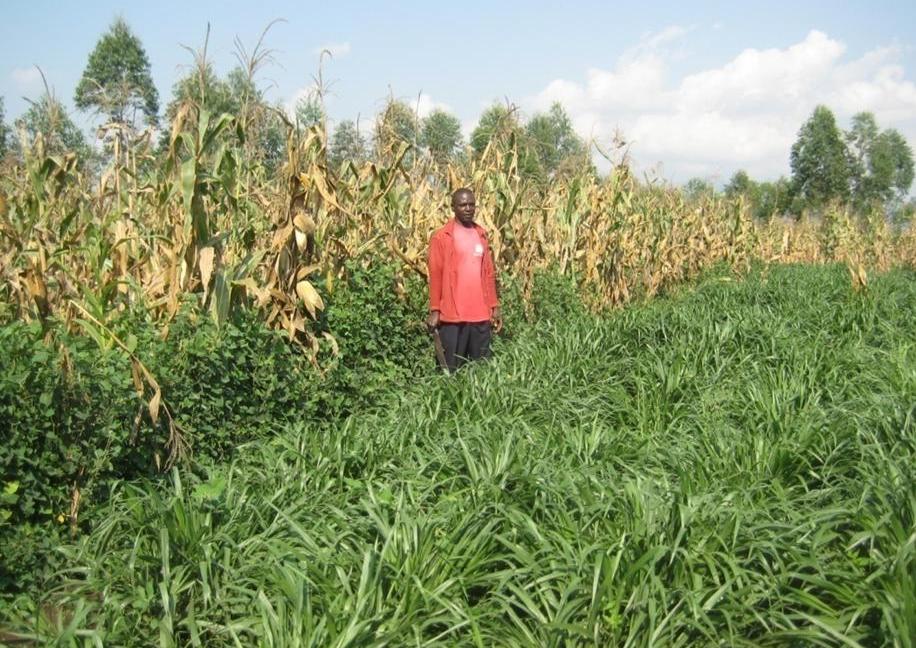Drought tolerant companion plants
(a) Farmers use drought-tolerant Mulato grass and Desmodium legume for management of stemborers in maize or sorghum fields
The climate-smart push-pull technology is a cropping strategy to control both stemborers and striga weed in drier agroecologies. The farmers use drought-tolerant Brachiaria cv. Mulato grass and Desmodium legume for management of these pests in their maize or sorghum fields. Desmodium is planted in between the rows of maize or sorghum. It produces a smell that stemborer moths don’t like. The smell “pushes” away the stem borer moths from the maize or sorghum crop. The Desmodium also covers the surface of the ground between the rows of maize or sorghum. It puts a chemical into the ground that stops striga weed from growing on maize and sorghum. Brachiaria grass on the other hand, is planted around the maize or sorghum crop as a trap plant. It is more attractive to stemborer moths and it “pulls” the moths to lay their eggs on it. However, Brachiaria grass does not allow stemborer larvae to develop on it due to poor nutrition for the stem borer larvae. So very few stemborer larvae survive, no striga grows and maize or sorghum is saved in the new push-pull strategy.
Brachiaria and Guinea grass are highly ranked by smallholder farmers as having potential as fodder while vetiver was considered of no fodder value. In replicated two-choice tests, all the three grasses were significantly preferred to sorghum and maize for oviposition by the stemborer moths (Chilo partellus). In replicated multiple-choice tests all plants were accepted for oviposition by C. partellus moths but the grasses were preferred to maize and sorghum. However, survival of C. partellus larvae on Brachiaria was minimal, <20%) confirming the suitability of Bracharia as a trap crop.
In addition, studies showed that oviposition on Brachiaria lead to suppression of key volatile organic compounds, principally (Z)-3-hexenyl acetate altering the profile of the volatile organic compound blend (known as herbivore induced volatiles-HIVs) released and making it attractive to both egg and larval parasitoids. Additionally, Brachiaria exposed to oviposition by C. partellus induced defense responses in the neighbouring ‘smart’ maize , making the maize highly attractive to both egg and larval parasitoids. This secondary response however involves increased emission of the key HIVs, notably (E)-caryophyllene, (E)-4,8-dimethyl-1,3,7-nonatriene, (E)-β-farnesene and (E,E)-4,8,-trimethyl-1,3,7-tridecatetraene. Thus combining Brachiaria, with an appropriate landrace maize provides a greatly enhanced Push-pull strategy.

